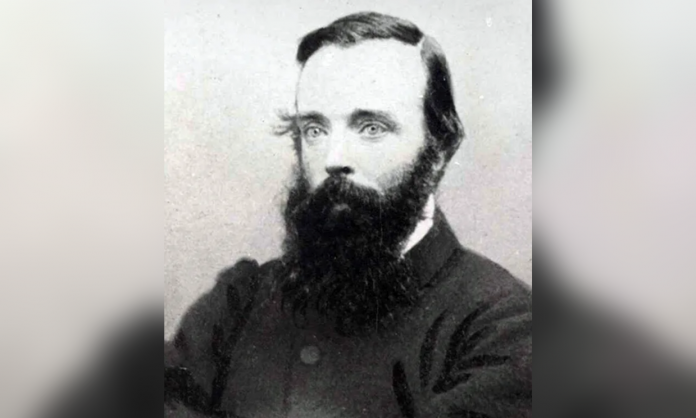By Martin Gleeson
Robert O’Hara Burke came from a wealthy Anglo-Irish family who resided in St Cleran’s, a fine country house near Craughwell, Co. Galway. Robert Burke was born in 1821 and when he was only 14 years of age, he was sent to study at the Royal Military Academy in Woolwich. The following year he went to Belgium for further education. At the age of 20 he joined the Imperial Austrian Army, in which he served for seven years.
Police
In 1848 Burke returned to Ireland and joined the Irish Constabulary. He did his cadet training at the Phoenix Park Depot in Dublin and was then stationed in Co. Kildare. In 1850 he was transferred to the Mounted Police in Dublin. In November 1852 Burke decided to emigrate to Australia and he sailed out of Queenstown (now Cobh), arriving in February 1853. In April that year, he joined the Victorian Police Force.
Victorian Exploring Expedition
In 1860 the South Australian government offered a reward of £2,000 to encourage an expedition to find a route between South Australia and the north coast. Robert Burke and John Wills were selected by the Royal Society of Victoria to lead this expedition of about 2,000 miles through rough country that had not previously been crossed by European settlers. The expedition set off from Melbourne on 20th August 1860. There were 19 men, 6 of whom were Irish, 26 camels, 23 horses and 6 wagons and food to last 2 years. Burke was the leader, George Landells as second-in-command and Wills was the surveyor and third-in-command. Irishman John King from Co. Tyrone was taken on as Expedition Assistant.
The Expedition
As August was winter in Australia, the group made slow progress due to bad weather, poor roads and wagons breaking down. A month after starting, several of the explorers resigned, including George Landells and the Medical Officer. Wills thus became the second-in-command. When they reached Menindee in October, having travelled 470 miles, two more men resigned, thirteen members were sent home and eight new recruits joined them.
In November after travelling about 800 miles they reached Cooper Creek. This was the furthest Europeans had travelled in Australia. It would have been advisable for Burke to wait at Cooper Creek until Autumn , in order to avoid the hot Australian summer. Burke, however, was an impatient man and decided to make a dash for the coast on December 16th. Taking Wills, Charles Gray and Irishman John King, Burke set out with 6 camels, one horse and just enough food for 3 months. He ordered the party waiting in Copper Creek to remain there for three months only.
Reaching the Gulf of Carpentaria
The four explorers travelled through temperatures of 120 degrees Fahrenheit and arrived quite close to their target. However, they discovered that there were mangrove swamps between them and the ocean at the Gulf of Carpentaria. Burke and Wills left Gray and King behind and set off through the swamps with the horse. They reached the estuary of the Flinders River on February 9th 1861. Torrential rain and the presence of the swamps meant that they never saw the ocean, which was just a few miles away. After traveling over 15 miles they decided to go back to due shortage of supplies.
Robert O’Hara Burke and William John Wills made history by being the first to cross the Australian continent from south to north.
Return Journey
Burke and Wills joined Gray and King on the return journey. The downpours of monsoon rain weakened the four men and Charles Gray died four days before they reached the depot at Cooper Creek. The depot party had left just 9 hours earlier.
After a few days of rest, the party of three tried to reach a settlement at Mount Hopeless but after two weeks of futile travel they returned to Cooper Creek. While waiting for rescue, the two great explorers Robert O’Hara Burke and William John Wills died of exhaustion in June 1861.
John King
The sole survivor King was approached by members of the local aboriginal tribe. He was invited to their campsite and was given food and shelter. They gave him a thin porridge made from the nardoo plant. This gruel-like dish was quite acceptable to King who had grown up during the famine days in Ireland where thin porridge was normal fare. In September, a rescue party found King who looked like a scarecrow. King was given a hero’s welcome when he arrived back in Melbourne at the end of November. Unfortunately, he had been physically and mentally shattered by his travels. He was given a pension of £180 per annum and lived the rest of his life as a recluse.
On January 15th 1872, John King, the largely forgotten survivor of the Burke/Wills expedition, died of pulmonary tuberculosis aged only 34. This man from Moy, Co. Tyrone deserves to be remembered as the first white man to traverse Australia from south to north and return alive.








